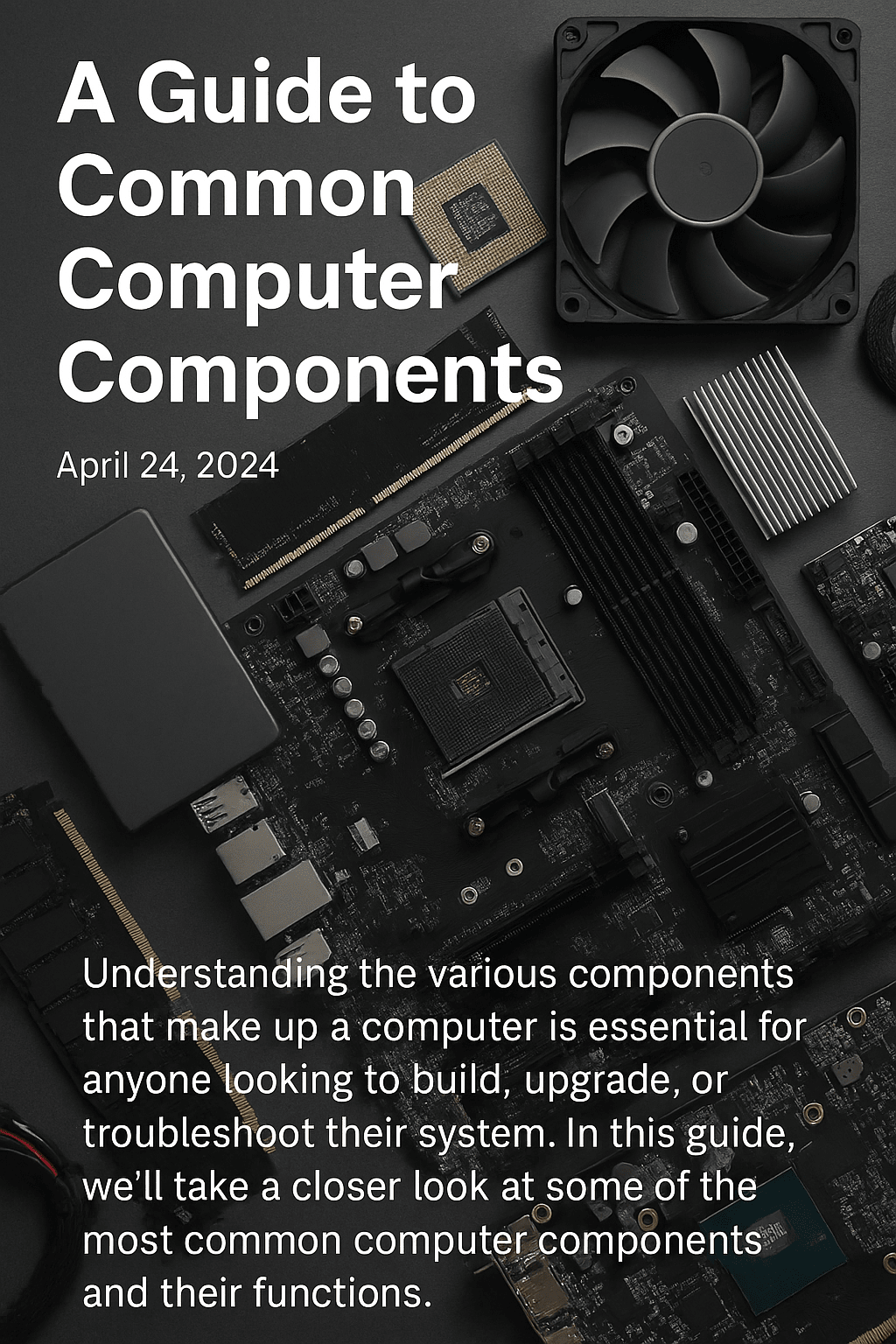The Heart of Your Machine: Under

🧠 Introduction
Ever wondered what really powers your laptop or desktop? Like the organs of the human body, every computer has parts that work together to keep it running. Whether you're a gamer, a programmer, or just curious — understanding computer components can help you upgrade smarter and troubleshoot better.
🧩 The Key Parts of Every Computer
- CPU (Central Processing Unit)
- Often called the “brain” of the computer, this chip handles all your calculations and logic. Faster CPUs mean quicker response times and better multitasking.
- Motherboard
- Think of this as the nervous system — it's the main circuit board that connects everything, from memory to graphics to power.
- RAM (Random Access Memory)
- Your computer’s short-term memory. The more RAM, the more programs you can run smoothly at once.
- GPU (Graphics Processing Unit)
- This is your graphics card. It renders images, videos, and games. Critical for gaming, video editing, and 3D rendering.
- Storage (HDD/SSD)
- Where your data lives. SSDs are much faster and more reliable than traditional hard drives.
- Power Supply Unit (PSU)
- Converts wall power into something your components can use. Underrated, but crucial.
- Cooling Systems (Fans/Heatsinks)
- Keeps temperatures down so your components don't overheat and slow down.
💡 Why This Matters
If you've ever had a slow PC, laggy games, or system crashes — understanding these parts is the first step to fixing (or upgrading) it. Knowing the role of each component gives you control over how your machine performs.
🧰 Final Thoughts
You don’t need to be an engineer to understand your computer. Whether you want to build your own PC or just make smarter choices at the store, learning the basics of computer parts is a tech-savvy superpower anyone can have.
